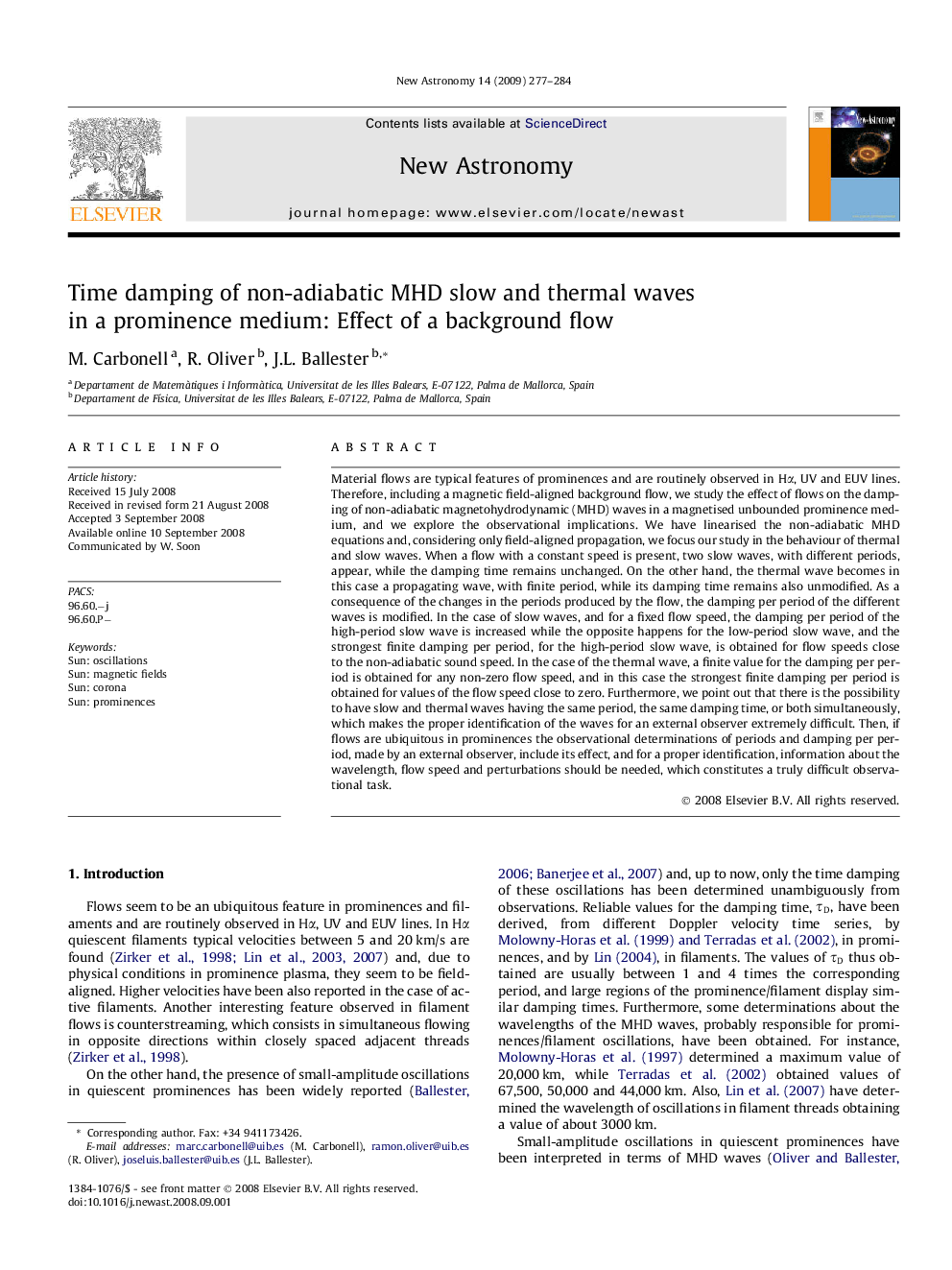| Article ID | Journal | Published Year | Pages | File Type |
|---|---|---|---|---|
| 1779642 | New Astronomy | 2009 | 8 Pages |
Abstract
Material flows are typical features of prominences and are routinely observed in Hα, UV and EUV lines. Therefore, including a magnetic field-aligned background flow, we study the effect of flows on the damping of non-adiabatic magnetohydrodynamic (MHD) waves in a magnetised unbounded prominence medium, and we explore the observational implications. We have linearised the non-adiabatic MHD equations and, considering only field-aligned propagation, we focus our study in the behaviour of thermal and slow waves. When a flow with a constant speed is present, two slow waves, with different periods, appear, while the damping time remains unchanged. On the other hand, the thermal wave becomes in this case a propagating wave, with finite period, while its damping time remains also unmodified. As a consequence of the changes in the periods produced by the flow, the damping per period of the different waves is modified. In the case of slow waves, and for a fixed flow speed, the damping per period of the high-period slow wave is increased while the opposite happens for the low-period slow wave, and the strongest finite damping per period, for the high-period slow wave, is obtained for flow speeds close to the non-adiabatic sound speed. In the case of the thermal wave, a finite value for the damping per period is obtained for any non-zero flow speed, and in this case the strongest finite damping per period is obtained for values of the flow speed close to zero. Furthermore, we point out that there is the possibility to have slow and thermal waves having the same period, the same damping time, or both simultaneously, which makes the proper identification of the waves for an external observer extremely difficult. Then, if flows are ubiquitous in prominences the observational determinations of periods and damping per period, made by an external observer, include its effect, and for a proper identification, information about the wavelength, flow speed and perturbations should be needed, which constitutes a truly difficult observational task.
Related Topics
Physical Sciences and Engineering
Physics and Astronomy
Astronomy and Astrophysics
Authors
M. Carbonell, R. Oliver, J.L. Ballester,
